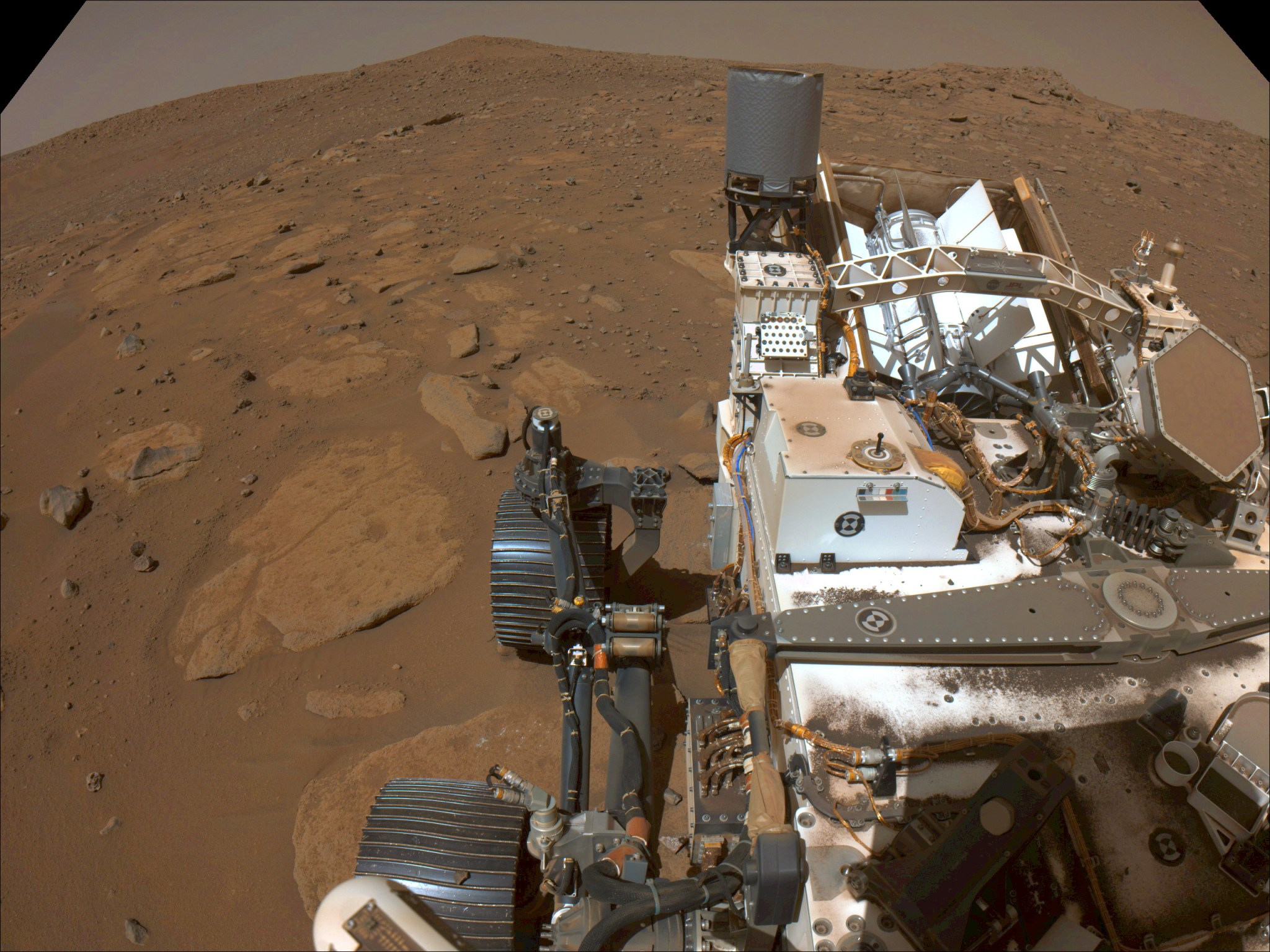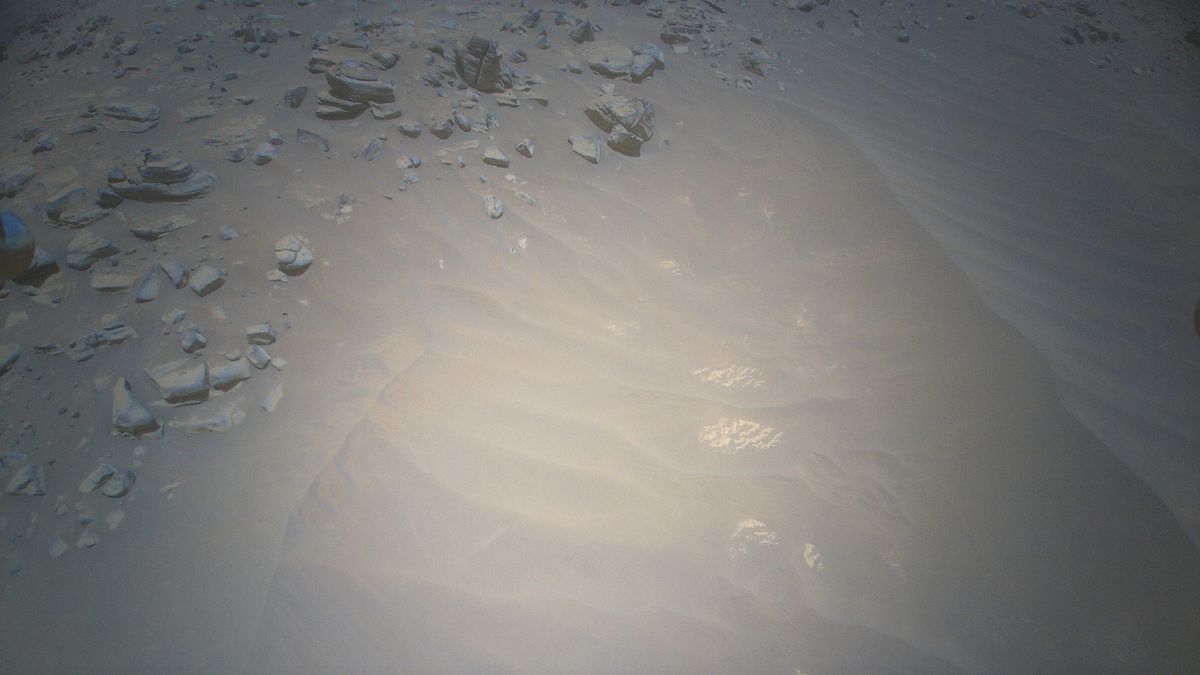NASA A model of the Mariner-C spacecraft seems to float in the darkness of space in this photo from a June 1964 Conference on New Technology at NASA’s Glenn Research Center in Cleveland. Mariner-C and Mariner-D were identical spacecraft designed by NASA’s Jet Propulsion Laboratory to fly by Mars and photograph the Martian surface. Mariner-C was launched on Nov. 4, 1964, but the mission ended unsuccessfully two days later. Mariner-D, or Mariner 4, launched on Nov. 28, 1964, and became the first successful mission to Mars, as well as the…
Read MoreTag: Mars
The Mars helicopter Ingenuity is an amazing success. NASA’s already testing tech for the next generation (video)
NASA recently released a video showing a pair of Mars helicopter rotor blades getting tested at the agency’s Jet Propulsion Laboratory (JPL). The test occurred on Sept. 15, just one day before NASA’s Ingenuity helicopter made a record-breaking flight on the Red Planet. With Ingenuity’s major success, NASA is planning to incorporate helicopter-like drones into future Mars missions too, built with designs more robust than their predecessor — which has completed 66 flights, and counting. The new dual rotor system recently tested at JPL features two carbon-fiber blades measuring more…
Read MoreNASA’s Mars Fleet Will Still Conduct Science While Lying Low
NASA’s Perseverance rover captured this view of the location where it will be parked for several weeks during Mars solar conjunction, a period when engineers stop sending commands to spacecraft at the Red Planet because the Sun may interfere with radio signals. NASA/JPL-Caltech Rovers and orbiters will continue collecting limited data during a two-week communications pause due to the position of Earth, the Sun, and the Red Planet. NASA will hold off sending commands to its Mars fleet for two weeks, from Nov. 11 to 25, while Earth and the…
Read MoreMars, Earth, or deep space? ESA narrows down finalists for a future space mission
The European Space Agency (ESA) has narrowed down proposals for a future medium-sized (M-class) mission. On Wednesday (Nov. 8), the final three proposals were revealed to be M-Matisse, Plasma Observatory and Theseus, which have varying goals ranging from studying the effects of the solar winds on both Earth and Mars to examining high-energy blasts of radiation from far beyond the solar system. The ESA called for these M-class proposals in 2021, and the launch of the winning mission is set provisionally for midway through the 2030s. A total of 27…
Read MoreNASA’s Ingenuity Mars helicopter flies on back-to-back days to prep for ‘solar conjunction’
NASA’s Ingenuity helicopter just made its 65th and 66th Red Planet flights, two short hops that helped prep the chopper for a coming stretch in which it will be cut off from ground control. Flight 65 occurred on Nov. 2. The 4-pound (1.8 kilograms) Ingenuity stayed aloft that day for 48 seconds, covering 23 feet (7 meters) of Mars ground in the process. Then, the rotorcraft was at it again on Nov. 3 with an even briefer sortie: It lasted 23 seconds and involved a horizontal movement of just 2…
Read MoreNew Japanese spacecraft aims to explore the mysterious moons of Mars
Mars itself is a world of puzzlement, particularly when it comes to whether or not the planet is the home of ancient or even present-day life. But put that aside for the moment. Even without the possible presence of life, the Red Planet is mysterious enough due to the fact that it’s circled by a couple of oddballs. Nobody knows for sure how the two moons of Mars, Phobos and Deimos, got where they are or what they are made of. But now an audacious, adventurous undertaking is being readied…
Read MoreNASA, JAXA Benefit from Collaborative Fellowship Experience
NASA Kennedy Space Center’s Katherine Cook, fourth from the left, attends a welcome reception for the 26th class of Mansfield Scholars at the Iikura House in Japan on Sept. 1, 2022. The reception was jointly hosted by the Ministry of Foreign Affairs of Japan, the Mansfield Foundation, and the National Personnel Authority of Japan. Contributed photo A yearlong journey of cultural and professional development overseas has a NASA Deep Space Logistics employee excited about current and future collaboration with one of America’s key international partners in the agency’s Artemis program. …
Read MoreNASA Is Locating Ice on Mars With This New Map
The blue areas on this map of Mars are regions where NASA missions have detected subsurface water ice (from the equator to 60 degrees north latitude). Scientists can use the map – part of the Subsurface Water Ice Mapping project – to decide where the first astronauts to set foot on the Red Planet should land. NASA/JPL-Caltech/Planetary Science Institute These Mars global maps show the likely distribution of water ice buried within the upper 3 feet (1 meter) of the planet’s surface and represent the latest data from the SWIM…
Read MoreMars was shaken by its strongest marsquake ever in 2022. Now we know what caused it
The strongest-ever quake to violently shake Mars arose not because of a crashing asteroid but rather the tectonic forces within the planet itself, scientists reported on Tuesday (Oct. 17). The new findings show the Red Planet is more seismically active than previously thought. On May 4, 2022, NASA‘s now-retired InSight lander recorded a magnitude 4.7 quake, five times stronger than the previous record holder of magnitude 4.2 that InSight measured in 2021. Unlike most marsquakes that cease within an hour, the reverberations from the summer quake continued for a record…
Read MoreFuture Mars astronauts may chomp on Earth’s tiniest flowering plant to survive
The smallest flowering plant on Earth could have a huge role to play in humanity’s exploration of space. Watermeal, or Wolffia, is found floating on the surfaces of lakes and ponds in Asia, gathering in pinhead-sized clumps on our planet. When carried to space, watermeal could provide both food and oxygen for astronauts. As humanity prepares for the next era of human-crewed space exploration, which will focus on longer missions and sojourns to the moon’s surface (and even Mars’), sustainability is key. That means a small sort of foodstuff that…
Read More



